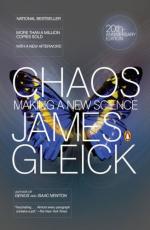|
This section contains 865 words (approx. 3 pages at 400 words per page) |

|
chapters 9-11 Summary and Analysis
Chapter 9:
The Dynamical Systems Collective: Santa Cruz and the sixties; The analog computer; Was this science?; "A long-range vision"; Measuring unpredictability; Information theory; From microscale to macroscale; The dripping faucet; Audiovisual aids; An era ends.
"Communication across the revolutionary divide is inevitably partial." (Chap. 9, p. 241).
Gleick begins this chapter by introducing The University of California at Santa Cruz. The school was the newest part of The University of California system and it quickly drew a number of eclectic and brilliant people to its doors. Among those people was Robert Stenson Shaw, a 31-year-old Harvard graduate. The year was 1977 when Shaw arrived.
William Burke was a Santa Cruz cosmologist and relativist. One day while he was in Boston, Burke ran into his friend Edward Spiegel, an astrophysicist. Spiegel and Burke got into a conversation about Lorenz, whom Spiegel knew on...
(read more from the chapters 9-11 Summary)
|
This section contains 865 words (approx. 3 pages at 400 words per page) |

|




